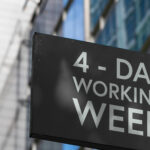One may find it normal to encounter stress in the workplace. Besides, multiple deadlines, long working hours, and heavy workloads are standard parts of work. However, too much stress can lead to burnout, leaving employees unable to accomplish their tasks or feeling anxious about their performance. This is even more worrying once one finds out how 0.9 million workers in the UK suffered from work-related stress, depression, or anxiety in the past 2 years, resulting in a loss of around 17 million working days. If left unaddressed, employees may continue showing poor performance or leave their jobs once overwhelmed.
Apart from the reasons mentioned above, another factor may be contributing to employee stress: physical elements in the workplace. This includes noise, poor lighting, and more. After all, stress may be caused not only by work but also by the environment in which employees work. Addressing physical stressors and providing employees with a great working environment is thus a surefire way to boost satisfaction and productivity in the workplace.
With that said, here are some ways to address physical stressors at work:
Poor lighting
The lack of proper lighting can lead to eye strain, fatigue, and headaches, making it more challenging for employees to finish their work. While one solution is to let in more natural light by opening the blinds, curtains, and windows, some workplaces may not have the privilege of access to natural light. In that case, here are some alternatives:
LED lighting
Fluorescent lights were once the most popular because they were more energy-efficient and provided better quality lighting than incandescent bulbs. Today, LED lights are even better than fluorescent lights: they convert the majority of energy to light and waste only a tiny portion of that energy as heat, making them efficient and energy-saving. Choosing to outfit your office with LED lights can thus help lighten up the office and provide workers with better lighting conditions.
Individual desk lamps
If factors like high ceilings mean installing overhead LED lighting won’t be enough, it may be best to furnish employees with individual lamps. These can be especially useful for employees near windows who need additional artificial lighting. Another solution is to situate standing lamps in poorly lit areas of the office, like seating or lounging corners. This way, employees can take a break from their desks and work in more relaxing spots conducive to productivity.
Poor ergonomics
Working entails sitting at a desk for long hours. While this sounds harmless, employees can experience physical stress and fatigue if they’re constantly hunched over their desks. Prolonged sitting can result in back, neck, and joint pain that distracts them from their work and hinders their productivity. Luckily, there are some ergonomic solutions to this problem:
Ergonomic office chairs
Ergonomic office chairs look similar to their traditional counterparts, but are specially designed with spine health in mind. They encourage proper posture with backrests that mimic the natural curve of a person’s back and neck, and provide armrests for additional support.
These office chairs are also cushioned to support a person’s pelvis and bottom, preventing pain even after long working hours. Finally, adjustable backrests and seat heights allow employees to customise their chair’s features to suit their needs.
Standing desk converters
Despite having ergonomic chairs, prolonged sitting may still cause employees pain and strain. This is why working while standing is recommended every once in a while to allow employees to stretch and facilitate proper blood flow to the legs.
Apart from providing standing desks to employees, providing them with standing desk converters is an efficient way to let them stand while working. These go on top of a normal desk and can be lifted up or down with simple controls. That way, users can adjust a converter’s height—lowering it if they want to work sitting down and lifting it if they want to work standing up. This maximises their productivity, as they’ll take fewer breaks due to pain and discomfort.
Noise
Noise is inevitable at work. Employees need to discuss ideas and solutions between themselves or even have short group discussions for more pressing concerns. However, too much noise can distract others from accomplishing their tasks. Fortunately, there are a few solutions that workplace leaders can establish to address this:
Desk dividers
Noise travels more freely in open office layouts, where employees may sit close to each other at the same long desk. Since they can’t move away from each other in this setting, it may be more convenient to have a divider separating their personal space from their seatmates’.
Desk dividers are panels that can attach or clamp onto a desk to separate one person’s space from the other. Some dividers are rectangular and fit snugly on tabletops, while others have an upside-down L shape that extends to the floor.
These dividers minimise noise, so employees on a call or with loud typing habits can keep their noise within their space. Moreover, installing dividers doesn’t require construction or renovation, providing an instant solution.
Acoustic booths for calls
Similar to public phone booths, these provide a small, enclosed area where individuals can hold phone calls or video meetings. However, acoustic booths are soundproof. With them, employees outside cannot hear the discussions, calls, or even music being played within. This is perfect for offices without private meeting rooms, as booths can accommodate up to 6 people.
These are more permanent solutions to controlling noise within the workplace, and may require more construction work. However, they’re worth considering if employees need an appropriate space to talk without distracting their colleagues.
Inefficient office design and layout
This is yet another factor contributing to physical stress at work. While it can be a significant problem to address, it’s crucial to do so to provide employees with the optimal working environment. To address this, here are some strategies to consider:
Group employees according to department
Some employees may find it stressful to communicate with their coworkers when seated randomly. This is why it can be more advantageous to seat employees according to their department. For instance, all marketing employees can be grouped in one specific area—regardless of whether a workplace follows an open office layout or not. This makes it easier for workers to find an employee from the marketing department if they need to talk to someone.
Another is to situate departments that often work together within a close distance. If the marketing department often communicates with the research team, for example, it’s best to place them in rooms or tables in close proximity. This will help them communicate more easily.
Office plants
Even though offices are meant for work, it doesn’t mean that they have to look stagnant. Workplace leaders can bring more life into the space with a biophilic office design, which is characterised by including plants and elements of nature in the workplace. These include potted plants, water features, and wood furniture. Such elements mimic nature, allowing employees to feel more productive, creative, and healthy in the office. Plants can also improve air quality, benefitting employee well-being.
Leaders can start incorporating a biophilic design into their workplace by adding indoor plants like snake plants, peace lilies, and oxalis. They can also allow more natural light to enter the area and choose more natural materials for future office furnishings.
Physical stressors at work can hinder employee performance, productivity, and well-being. Thankfully, many of these stressors can be addressed through the various methods listed above.









